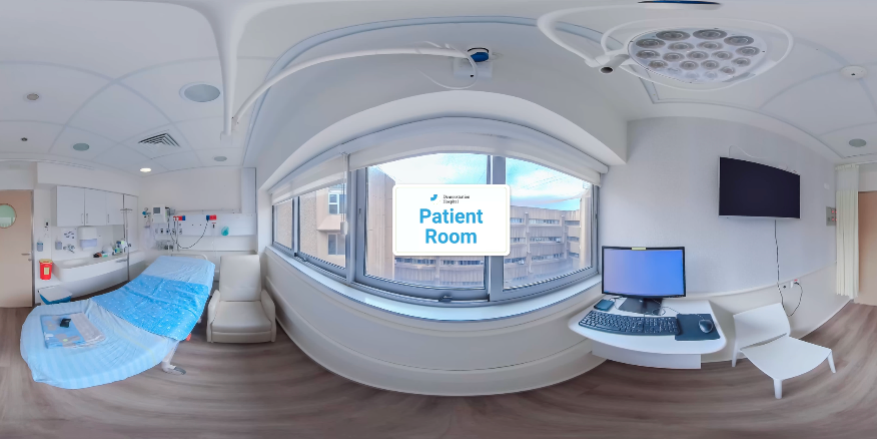Shooting Better Green Screen Video for Holotwins
Using a green screen can be a fantastic tool for video production, but it requires attention to detail to ensure the best possible results. There are...
Description of Holotwins
Description of Portals
Description of Things
Description of Games
Marketing Agencies
Printing & Graphic Design
Sports Teams
Dealerships
Direct Response Marketing
Digital Marketing
Paper-based marketing
Mailers
Fan Engagement
Education
Sales Enablement
3 min read
 M.J. Anderson
:
Sep 12, 2023 11:30:00 AM
M.J. Anderson
:
Sep 12, 2023 11:30:00 AM

Using a green screen can be a fantastic tool for video production, but it requires attention to detail to ensure the best possible results. There are some obvious things to watch out for like eliminating the wrinkles in your green background and choosing a location that has neutral ambient noise or as little echo as possible. Here are 5 best practices for shooting video for Holotwins on a green screen:
Whether you're using a professional camera or a modern mobile phone, ensure the device has optimal settings for green screen work. Mobile phones today, especially flagship models, have cameras of excellent quality that can capture high-resolution video suitable for green screen projects. Regardless of the device:
Look for a good color sampling rate. If using a camera, one that records at least 4:2:2 color sampling will provide better results than one that records at 4:2:0.
Use a shallow depth of field (if possible) to make the green screen as blurred as possible, aiding in keying.
On mobile phones, turn off any auto-enhancements or filters, as these can affect the consistency and quality of the video.
Ensure the frame rate and resolution are set to the desired levels. 30fps is a great place to start for Holotwins. Many mobile phones now allow for manual video settings, so make sure you're capturing at the highest quality possible.
When using a mobile phone, always use a tripod or stabilizer. This ensures steady shots, which are especially important when combining the footage with another background in post-production.
Move the subject to the front edge of the green screen. This minimizes the chance of green light reflecting onto the subject (known as green spill). By having some space between the subject and the screen, you reduce the possibility of the green color bouncing back onto the subject which can make keying (removing the green in post-production) difficult.
 Step 3: Frame the Subject Properly
Step 3: Frame the Subject ProperlyWhen setting up your shot, ensure the subject's feet (or the bottom of the subject) are close to the bottom of the frame. This 1 tip will make a huge difference in conveying the subjects appeared connection to the real world surface on which the Holotwin will be anchored.
Another important detail concerns framing the subject so that no additional studio elements are in the shot. No light stands, non-green screen studio background and or microphones.
It's essential that the green screen is lit uniformly. Shadows or hotspots can make keying out the green color in post-production more challenging. Use softbox lights or other diffused lighting to achieve an even green across the entire screen. Separate lighting setups for the background and the subject can help ensure both are optimally lit.
Avoid having your subject wear anything green, as it will get keyed out with the green screen in post-production. Similarly, be cautious with very reflective props or clothing as they can catch the green light and become partially transparent during the keying process.
In post-production, normalizing the key color is a crucial step, especially for applications like Augmented Reality where the integrity of the Holotwins illusion is paramount. By ensuring that the green screen background is uniformly adjusted to a single, pure Chroma Key Green, you can achieve a cleaner and more accurate key. This uniformity reduces artifacts and discrepancies that can break the illusion. Especially in AR, where Holotwins need to seamlessly integrate with the real-world environment, a clean key derived from a normalized background ensures that the holographic effect appears realistic and well-integrated, thus enhancing the immersive experience.
With the introduction of the latest version Adobe Express, the process of removing backgrounds from .mp4 files has been revolutionized. In fact, using this product can eliminate the need for shooting on a green screen altogether. This software harnesses advanced algorithms and machine learning to streamline the background elimination process. You can see our guide on how to use Adobe Express to remove backgrounds here.
However, while this tool might make post-production easier and more efficient, it's essential not to bypass the foundational practices of filming. Following steps 1-4 remains crucial. A well-prepared recording, with proper lighting, framing, and optimal settings, will always yield the best results. Even the most advanced software benefits from a clean and professionally captured source. So, while new tools can enhance our workflow and speed up post-production, the quality and care taken during the filming phase are irreplaceable.
If you have ay questions or would like to see how easy it is to create Holotwins, you the button below to schedule a time for a demo.

Using a green screen can be a fantastic tool for video production, but it requires attention to detail to ensure the best possible results. There are...

RealityBLU is a leading builder of immersive marketing technologies that can transport engaging digital experiences into a consumer’s physical world...

With the rapid evolution of technology, healthcare has entered an era where accessibility, patient engagement, and experiential understanding are...